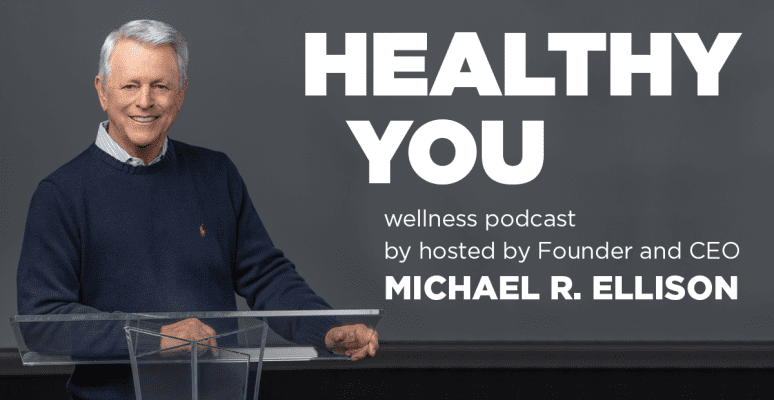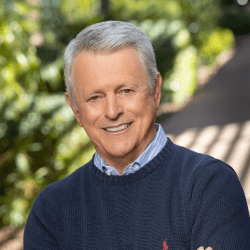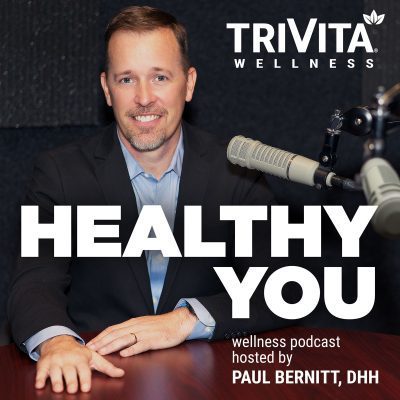Your cart is currently empty!
Blog
-

Why You Should Care About Chronic Inflammation
Researchers have carefully studied some of the most common diseases to affect Western populations in search of their root causes. While many advances have been made, much is still unknown. However, they agree on a common factor in virtually all of them: inflammation.
Inflammation is a well-known symptom of infectious diseases, but more recently, chronic inflammation has been linked to numerous conditions, including major degenerative diseases such as diabetes, heart disease and even Alzheimer’s.
To better understand why inflammation is so important, it’s crucial to distinguish between acute and chronic inflammation.

Acute inflammation is a normal and essential process that allows the body to attack hostile invaders such as bacteria, fungi and other foreign substances anywhere in the body. Acute inflammation often comes on rapidly and subsides once the body has neutralized the threat and healed.
Unlike acute inflammation, which is short-lived, chronic inflammation can linger, lasting months or even years after the initial threat. Chronic inflammation typically starts as an acute inflammatory response; however, when your body’s healing powers go into overdrive, chronic inflammation can result. Alternatively, low levels of inflammation may be present even without the presence of an injury or illness. In this case, the immune system launches an attack on healthy cells and tissues.
What You Can Do to Curb Chronic Inflammation
Occasional inflammation is normal – and necessary! However, making smarter lifestyle choices can reduce your risk of creating an environment where chronic inflammation can thrive and lead to illness.
Many factors have been shown to play a role in chronic inflammation. These include obesity, chronic stress, smoking, excessive alcohol consumption, and a sedentary lifestyle.
New Clinical Study Validates Nopalea’s Health Claims

Nopalea is a breakthrough dietary supplement that promotes wellness by supporting the normal and essential anti-inflammatory function performed by the immune system. It can also help reduce inflammation and improve joint mobility and flexibility.
In an independent randomized, double-blind, placebo-controlled clinical study, Nopalea was shown to improve mobility, flexibility, and range of motion in the neck, back, and joints. Also, results showed that Nopalea lowered elevated levels of C-reactive protein, an inflammatory marker.
For lower CRP levels and improved quality of life, consider adding Nopalea to your daily routine, along with making other lifestyle change.
References:
- https://www.health.harvard.edu/newsletter_article/Inflammation_A_unifying_theory_of_disease
- Jensen, G. Evaluation of Activity Levels, Inflammatory Markers, and Overall Wellness. 2019.
-

An Inflammatory Lifestyle May Put You at Risk
Your greatest health risk is chronic inflammatory-related diseases, according to the World Health Organization (WHO). In fact, they say it is the most significant health risk to all humanity worldwide!
Here is the good yet tragic news! Chronic disease is largely preventable, but most just accept this very harmful robber of health and eventually wealth. An article published by World Health Organization states, “Although more basic research may be needed on some aspects of the mechanisms that link diet to health, the currently available scientific evidence provides a sufficiently strong and plausible basis to justify taking action now. Beyond the appropriate medical treatment for those already affected, the public health approach of primary prevention is considered to be the most cost-effective, affordable and sustainable course of action to cope with the chronic disease epidemic worldwide.”
I encourage you to not accept these modifiable diseases as age-related issues that you have no course of action against. You do! You can make the choices to support your body systems and organs that promote wellness. Your body is designed to keep you well. We have bought into the idea of medication and disease management as the way to greater wellness. Yes, thankfully, we have modern medicine. But we also have modern processed foods, sedentary lifestyles perpetuated by devices like television, computers, cell phones, etc., that engage us as we sit and further encouraging chronic inflammation from the lack of physical activity. Dr. Thomas Frieden, the former Director of the Centers for Disease Control and Prevention (CDC), says the closest thing to a wonder drug is walking! Yes, one of the Ten Essentials of Wellness. He is quoted in Harvard Medical School material as stating, “Walking can have a bigger impact on disease risk and various health conditions than just about any other remedy that is available to you.”

National Institutes of Health identifies risks you should be aware of in understanding and identifying chronic inflammation your number one health risk.
- Age: Age is measured by free radical accumulation, not years and other related factors like increase in visceral body fat.
- Diet: A diet rich in saturated fats, trans-fats and refined sugar is associated with higher production of pro-inflammatory molecules.
- Obesity: Some reports show that body mass index of an individual is proportional to the pro-inflammatory cytokines secreted.
- Low Sex Hormones: Maintaining levels of sex hormone, like testosterone and estrogen, reduce the risk of inflammatory diseases.
- Stress and Sleep disorders: Both physical and emotional stress is associated with the inflammatory cytokine release. Furthermore, sleep disorders are considered an independent risk factor for chronic inflammation.
I have to go on and give you indications of the symptoms related to chronic inflammation in the NIH article. Common signs and symptoms include:
- Body pain
- Constant fatigue and insomnia
- Depression, anxiety, and mood disorders
- Gastrointestinal complications like constipation, diarrhea, and acid reflux.
- Weight gain
- Frequent infections
Say no to chronic inflammation. Say no to foods that promote inflammation like refined carbs, fried foods, sugar-sweetened soda, processed meats, margarine, shortening and lard. And say yes to physical activity as one of the most important anti-inflammatory activities. You don’t have to be in the gym. Walking is next to being the closest things to a wonder drug, and it can be done anywhere!
I invite you to listen to my podcast<link> with Jarir Nakouzi, M.D. as he sheds great insights into chronic inflammation. He is a renowned international lecturer, and I think you will find it very informative.
As National Institutes of Health relates, chronic inflammation is not a specific disease, it is a mechanistic process of the immune system, that if left uncheck and uncontrolled, can lead to many harmful effects. The good news, you can do so much to impact your health and have healthy inflammation responses.
Blessings of wellness to you!
-

Episode 17: Featuring Jarir Nakouzi, M.D.
Jarir Nakouzi, M.D. discusses the intricate links between chronic inflammation, lifestyle choices and chronic disease.
The choices you make every day influence your health and well-being. On this episode of Healthy You, Dr. Nakouzi delves into the growing understanding of how your life choices affect your health outcomes. Join Michael R. Ellison and Dr. Nakouzi to learn more about lowering your risks by reducing your inflammation.
Click Here to listen to Part 2 of this podcast.
About Jarir Nakouzi, M.D.

Jarir Nakouzi, M.D. completed his residency in the Yale University Program of Internal Medicine and has practiced biological medicine for over thirty years. As an expert in oncology, he specializes in integrative approaches in treating chronic degenerative conditions. His private practice in Connecticut takes an integrative approach to chronic disease.
-

10 Ways to Breathe Better
Here’s a simple fact: Your body needs oxygen, not only to live but to live better. Up to 75 percent of toxins are removed through breathing.
The problem is most of us don’t get enough oxygen into our lungs. That’s bad news because, without an abundant supply of oxygen, we’re asking for serious and long-term health problems. Every second of every day, our body exchanges carbon dioxide for oxygen and that oxygen keeps every single cell in our bodies alive and functioning. As soon as you limit your oxygen intake –think shallow breathing– you’re cutting off your body’s much-needed oxygen supply.
We know you want to be healthy so you can live life to the fullest. That’s why you’re here. The most important thing you can do right now, this very second, is to take a big deep breath. Go ahead. Inhale deeply. Do you feel refreshed? For the next few minutes, breathe deeply and pay attention to how you feel.
Taking deep breaths can transform your life. If you’re feeling tired, overwhelmed, drained, unfocused, stressed, or just not like yourself, you might need to breathe deeply and mindfully.
Food for thought: Emotional and physical stress causes oxygen loss. Add Adaptuit to your daily routine. With a unique blend of adaptogens and L-theanine to help you relax, this unique formula is designed to combat daily stress.
Exercises and activities to add to your deep breathing routine:
- Practice mindful breathing. Slowly inhale for 4 to 6 seconds, hold your breath for 3 seconds, and slowly exhale for 4 to 6 seconds. This exercise is all about control.
- Take a long walk and focus on breathing deeply and mindfully.
- Eliminate allergens in your environment. Change your air conditioner filters, clean your vacuum, and consider purchasing an air purifier.
- Take 10 minutes every day to breathe deeply. Stop what you’re doing and breathe. You might find you no longer need that afternoon caffeine pick-me-up.
- Take a restorative yoga class. Yoga focuses on the breath, and a restorative yoga class is gentle enough for all levels.
- Sit up straight. Poor posture can contribute to shallow breathing. Buy a workout ball or kneeling chair, and sit on it for 15 minutes a day instead of your usual chair. This will help strengthen your core and improve your posture.
- Clean up. Go through your kitchen cabinets and get rid of cleaning supplies that aren’t green. Toxic chemicals can wreak havoc on your lungs.
- Try aromatherapy. Aromatherapy can help you relax and improve your mental clarity. By inhaling organic essential oils, you will be giving your body a cue that it’s time to settle down, breathe deeply, and heal. Lavender and bergamot oils are wonderfully beneficial as both are intended to help you relax.
- Create a relaxing playlist. As you listen to your playlist, center yourself by focusing on each breath. Slow, deep breaths will help you find clarity and calm.
- Hit the gym. Working out will force you to breathe deeply. If you’re new to working out, start slow and talk to a personal trainer so you can avoid getting hurt. A 20-minute walk on the treadmill, 15-minute bike ride, or 10-minute turn on the elliptical will leave you feeling refreshed and energized.
-

Episode 16: Look at Illness in a New Way
Michael R. Ellison, Founder and CEO of TriVita, shares cutting-edge information from leading institutions that will help you look at illness in a new way and set you on the path to optimal well-being.
Medical science is ever-changing; new advancements and discoveries are made each day. And this is good news for you!
On this episode of Healthy You, Michael R. Ellison discusses the latest findings regarding inflammation and common health concerns like heart disease, obesity and Alzheimer’s.
About Michael R. Ellison, TriVita CEO and Founder

Michael Ellison has a mission; He wants to help people everywhere experience whole-person wellness. For him, this mission became crystal clear when he suffered a health crisis at the age of 50. As Michael recovered and found his way back to health, he became determined to share his message of wellness with others. This led to his founding of TriVita in 1999, where he now leads the company’s ongoing pursuit of bringing health and wellness to the world.
Helping people experience greater wellness and mitigate the unwanted, unnecessary lifestyle-related diseases continue to be Michael’s purpose, and he brings this passion to the table in the day-to-day operations at TriVita.
Michael Ellison is also the author of 10 Habits of Wellness and founder of House of Giving; a nonprofit organization focused on serving those less fortunate, especially children in poverty-stricken areas of the world by providing opportunities for a higher quality of life and wellness.
-

How to Stay Hydrated
Everyone knows it’s important to drink water, but many fail to do so correctly. For some, they don’t like the taste of pure water, and instead drink coffee, sodas, or sweetened teas which can dehydrate your body further.
The human body is comprised of mostly water and is continually losing water through respiration, perspiration, and urination. So, it’s critical to rehydrate throughout the day, especially during hotter times of the year, as well as before, during, and after exercise or other physical exertion.
Here are a few of the most common types of water available that can help keep you hydrated and healthy.
Mineral Water
Mineral water comes from underground springs and naturally contains minerals such as calcium, iron, magnesium, and manganese. Mineral levels can vary between brands, and the presence of the minerals often gives a salty taste to the water.
Alkaline Water
Drinking alkaline water is believed to help neutralize acids in your body and metabolize nutrients more efficiently. Alkaline water is less acidic than regular tap water and may have nutrients added to it such as calcium, silica, potassium, and bicarbonate.

Coconut Water
In recent years, coconut water has become a popular drink of choice. Coconut water is the liquid found inside young coconuts. Coconut water has high electrolyte content and has a slightly sweet taste.
Electrolyte Water
Electrolyte waters are enhanced with sodium and potassium to help your body absorb water quickly and prevent dehydration, especially in intense heat or physical exertion.
Sparkling Water
Sparkling water is just carbonated water. When carbon dioxide is added to water, it becomes bubbly, which is a healthy and hydrating alternative to sodas.
Spa Water
This may sound like an ultra-fancy type of water, but it’s just fruit-infused water. Adding fruits, veggies, and even herbs can provide a flavor and nutrient boost to your water. Stay refreshed and hydrated by adding watermelon, strawberries, citrus fruits, cucumber, or mint and enjoy!
-

7 Foods to Help Reduce Stress
Getting stuck in traffic, working with difficult people, or dealing with any of life’s inevitable challenges can leave you feeling overwhelmed and emotional. It’s during these times that most people turn to food for comfort. While it may feel right at the time, reaching for ice cream and chips can make things worse.
Maintaining a healthy diet can help counterbalance the harmful effects of physical and emotional stress. Here are seven foods and nutrients that can help ease stress and improve your well-being.
Complex Carbs and Whole Grains
Complex carbohydrates are thought to decrease stress by increasing serotonin production. Serotonin affects every part of your body and is considered a natural mood stabilizer. Foods rich in complex carbs include whole grains, such as oatmeal, quinoa, and whole-grain bread. To boost your happy hormones, avoid refined grains and simple carbohydrates like white bread, bagels, cookies, sugary foods, and drinks.
Probiotics and Prebiotics
Trillions of bacteria live within your digestive tract; this is your microbiome. These bacteria play an essential role in your physical and mental well-being. The right balance of gut bacteria helps you digest food, absorb nutrients, strengthen your immune system, and bolster your defenses against chronic diseases, such as inflammatory bowel disease and obesity. Gut bacteria diversity can also influence your mood.
To promote a healthy microbiome, add probiotic and prebiotic foods to your diet. These include foods such as kefir, kombucha, pickled and fermented foods, asparagus, onions and garlic, legumes, and fruits like apples and bananas.
Herbal Teas
Sipping a warm cup of tea can be extremely comforting during times of stress. There are many calming teas on the market today, so don’t be afraid to try a few different types to find the one that works best for you. Some of the most well-known stress-busting teas include chamomile, peppermint, lemon balm, and green tea. Green tea contains L-theanine, an amino acid, that has been shown to reduce physical and psychological effects of stress.
Adaptogens
Adaptogens are special compounds found in certain plants and foods. These adaptogens can help your body handle physical and emotional stress by either increasing or decreasing your immune response based on what your body needs. Common adaptogens include ashwagandha, maca root, and reishi mushrooms.
Add Adaptuit to your daily stress management routine and reap the benefits of powerful adaptogens plus L-theanine!
Folate
Mental Health America reports that low folate levels have been linked to depression and even dementia. Fortunately, folate (vitamin B9) is found in many fruits, vegetables, and fortified foods. Fill up on folate-rich foods such as asparagus, broccoli, spinach, oranges, avocado, eggs, beets, and bananas.
Keep in mind that other factors such as chronic disease, tobacco and alcohol use, medications, and genetics can all affect folate levels. This is just another reason to see your doctor regularly to determine if you’re low on this important nutrient.
Omega-3 Fats
Omega-3 fatty acids are beneficial in decreasing anxiety and depression, and, in turn, reducing stress. Good dietary sources of omega-3s include oily fish like sardines, herring, anchovies, as well as eggs and grass-fed meat. Plant-based options include flaxseeds, chia seeds, walnuts, spinach, and Brussels sprouts.
Crunchy Foods
When stress strikes, you’re more likely to clench your jaw and raise your shoulders. Munching on a healthy, crunchy snack such as carrots, celery, nuts, or dried banana chips can help release tension in your jaw, face, and neck, thus reducing your chances of grinding your teeth and developing a tension headache or migraine.
-

Heaven on Earth
If heaven represents feelings of overwhelming love and well-being, then you can experience heaven here on earth. Sometimes near-death experiences (NDE) help us enter into that heavenly place.
I want to share with you my father’s recent near-death experience. He was just two weeks away from celebrating his 92nd birthday when he was rushed to the emergency room. His hands were turning black, arms were swollen twice their normal size, his face was swollen, and the pain was agonizing.
He had three major blockages restricting blood flow, and the cardiologist recommended immediate surgery. Within 24 hours he was on the operating table, then sent to ICU. Several days after the initial operation, my dad was still on the brink of death. According to the doctors, the only thing standing between him and death was the powerful medications stabilizing his blood pressure. But his veins could no longer accept the powerful drug of life support. A very invasive procedure was the next step, but it could also leave him severely cognitively impaired.
His living will states, “never life support and let me go when it is time!” My sister and I concluded that 2 Timothy 4: 7-8 was the message; “I have fought the good fight, I finished the course, I have kept the faith. In the future, there is laid up for me the crown of righteousness.” We told the physician to stop administering the life-supporting drug. We were told that he would die, and we accepted that as his desire and that his faith would be whole.
Then something strange happened. As we were busily signing documents, gathering the family to say their goodbyes something else was going on. Five hours later, back in the ICU, we walked into his room, expecting the last breaths from my dad. Instead, he was sitting up in bed singing “what the world needs now is love, sweet love.”
I cannot put into words the range of emotions I experienced in those few moments.
What I do know is that I have not been able to get those words out my head. Love, sweet love. Yes, that is the heaven on earth we all need. As it says in 1 John 4:16, “God is love!” The more we embrace love, the more of the God of heaven we experience here on earth. How is it possible that something so powerful, so empowering, so opposite of fear and intimidation can seem so far removed from our daily lives?
How is it possible that with all the social media platforms connecting us, that loneliness is rampant among baby boomers and millennials alike? How are millennials the loneliest generation? Rates of teenage suicide are alarmingly high today! Today loneliness is one of the significant mental health issues, along with depression, facing the aging population.
Conventional medicine aims to have a drug for everything we label a dis-ease. Drug companies and physicians push toxic medications that in-turn require even more drugs to counter the side effects and mask the symptoms. On the other hand, love is one of the most powerful healing forces in our world today. It may not drive a lot in revenue or be an instant fix, but it is the foundation of well-being and heaven on earth.
Love gives joy, not depression. Love always brings feelings of value and worth. Love will guide lifestyle choices that promote wellness, not illness and disease!

“When you love yourself, you see life differently.” Near-death experiences are not necessary if you understand life and how to create heaven on earth. The closer we move our thoughts and behaviors towards love, and yes, this includes self-love, the less fear, stress, illness, and disease we all will experience. Many cancer patients have overcome cancer and their NDE by accepting love into their lives, valuing themselves, and life. This love guides their choices for supporting their bodies and purpose for living. When you love yourself, you see life differently. When you love yourself as God loves you, you see value and purpose. You see the uniquely created you; created in His image and likeness! You see the light in your life to shine brightly!
I know many people feel they have to do something to be loved by God, but there is nothing more you can do except being you! God loves you and the world that He gave the ultimate gift, according to John 3:16. There is much you can do to embrace love into your life!
Yes, life can be, at times, a fierce struggle. We may feel like victims, always reacting to the circumstances of life when bad things do happen. I had lunch this past week with a dear friend that had a near-death experience that changed his life forever. He and his two teenage daughters visited Peru to climb Mt. Machu Picchu. Unfortunately, they were kidnapped. Today, after their NDE, they love life and are grateful to God for intervening in what could have been the most tragic of events. They could have chosen bitterness and anxiety but instead allowed the near-death experience to move them towards love, loving God, one another, and to love life!
Life brings both good and unfortunate circumstances, and it always offers us a choice to move away from love or towards love. When we move towards Love it brings a little heaven here on earth.
Love is one of the essentials of wellness. I write about love and making it a daily habit of expressing and feeling love in my latest book, 10 Habits of Wellness.
-

Episode 15: Featuring Olivia Remes
Olivia Remes, Ph.D., discusses the physical, mental, emotional and spiritual benefits of finding your purpose in life.
Discovering your purpose and meaning drives your life and is deeply connected to your well-being.
On this episode of Healthy You, Olivia Remes, Ph.D. talks about the importance of discovering your unique purpose, shares different strategies to help define it and how to live with purpose for better physical, emotional and spiritual health.About Olivia Remes, Ph.D.

Dr. Olivia Remes is a mental health researcher with a focus on depression and anxiety at the Department of Public Health and Primary Care at the University of Cambridge. Olivia became very interested in researching these common mental disorders to understand why some people are more prone to developing them and the societal impact associated with these conditions. She has been interviewed by Sky News and BBC News about her research; she also gave a widely-viewed TEDx talk on how to cope with anxiety.
TED Talk: How to Cope with Anxiety

Anxiety is one of the most prevalent mental health disorders, and it affects people worldwide. Unfortunately, very few people who need treatment actually receive it, which can lead to other conditions such as depression and disability. In her talk, Olivia Remes provides a roadmap for coping with anxiety and how to manage this disorder.
-

Recipe: Easy Veggie Chips

Here’s a nutritious way to enjoy some crunchy, tasty chips. By thinly slicing and baking vegetables, you’re able to get your chip fix without compromising your health goals.
Make a large batch on the weekend and portion your veggie chips out into ziplock bags for the week.
HERE’S WHAT YOU NEED:
• 2 lbs of root vegetables, thinly sliced (sweet potato, parsnips, beets or carrots)
• Sea salt or Himalayan salt Cajun spice (or any spice of your choice)
Preheat the oven to 375 degrees. Line a rimmed baking sheet with parchment paper.
Thinly slice the root vegetables to about 1/8 inch thickness. Toss the sliced veggies with a sprinkle of salt and Cajun spice.
Spread the sliced veggies in a single layer over the prepared baking sheet. Roast for 15 minutes, and then flip them over. Roast for another 5-10 minutes or until crispy. Enjoy!
-

Top 3 Fitness Tips to Detoxify
Try these poses to help stimulate your body’s natural detoxification.
1. TWIST IT UP!
Any twisting pose will help to ‘wring out’ your internal organs. Try sitting up straight in a chair and keeping your hips level, rotate your upper body gently to the right, hold for 30 seconds, rotate to the left and hold for 30 seconds more.


2. FORWARD BEND
Stand with your legs wide, then do a forward bend, folding forward at your waist as far as you comfortably can. Hold for 30 seconds. This compresses your digestive organs, which helps to speed up elimination.
3. INVERSIONS
Lay on your back and raise your feet into the air so that they are above your heart, then rest your feet on a wall or a chair and hold for 30 seconds. This stimulates circulation, which helps the body to flush out toxins.
-

ZZzzz…
Research has shown that catching a few Zs during the day can benefit mental and physical health
The need for sleep is beyond debate. No wonder it’s one of TriVita’s Essentials For Health and Wellness. A good night’s sleep helps enhance heart function, hormonal maintenance and cell repair.
It also boosts memory and overall brain function. Sleep deprivation causes the opposite effect and can ultimately degrade your health.Napping benefits
Throughout the world (not so much North America) napping is an established daytime ritual. Millions of Chinese workers nap at their desks for an hour after lunch, and daytime napping is common in many European countries. However, the truth is very few North American workers would risk taking a nap at their desk.
Studies have actually shown that napping can benefit mental clarity, creative thinking and improve memory. Naps can even have a physical benefit. One study of over 23,000 Greek men showed that participants who napped three times a week had a 37 percent lower risk of dying from heart disease than those who didn’t nap. Another study showed that people who napped had higher test scores on memory tests.
Sleep experts have determined that daytime naps can help:
- Improve alertness
- Boost creativity
- Reduce stress
- Improve perception, stamina, motor skills and accuracy
- Enhance mood and boost memory
How much nap-time is right for you? Ten to 15 minutes of sleep seems to be the optimum amount for improving mental performance and alertness. Longer naps tend to leave people feeling drowsy and less alert.
Here are some tips to maximize the value of your nap:
- Set an alarm for the specific amount of time you want to sleep.
- Don’t sleep for too long, or you will wake up feeling groggy.
- Choose the right time of day when your energy levels are naturally decreased.
- Experiment with different times of the day, different nap lengths and different ways of waking up.
- Establish a napping space with as little light as possible.
Don’t ignore your daytime sleepiness. A good snooze can really brighten the rest of your day.
-

Setting the Record Straight with Self-Talk
Why are some people more successful than others? Why do some people seem to grow and develop into a better version of themselves while others remain stagnant year after year? The answer is more straightforward than you might think; It all comes down to your programming.
Shad Helmstetter, Ph.D. has dedicated his life and career to unpacking how the messages (programs) a person receives throughout their life impacts their success and happiness. “Our thoughts determine what is going to happen and how successful we’re going to be. This is foundational. It has to do with every single part of our lives.”
How The Brain Wires Programs
“It is widely acknowledged that as we grow up, we are programmed and eventually live out those programs. And we’ve learned more recently that all of those messages — the programs given to us consciously and unconsciously by our families, teachers, cultures, etc. — are physically wired into the brain when they’re repeated often enough,” explains Dr. Helmstetter.
One of the jobs of the brain is to store all of the information accumulated each day. Neuroscientists were studying how the brain stores information most efficiently and they found that repetition was the key. When you first hear a message, your brain receives it and records it but doesn’t permanently store it. But when you get the same message, again and again, the new fledgling neural network that’s starting to form grows a little stronger. Each time it’s repeated, that specific neural network is being fed and becomes stronger. That’s how you learned most of what you know and still remember it today. For example, think of a song you learned as a child; you can still remember the words to that song, years later, because of the power of repetition.
A reinforced idea creates strong neural pathways in the brain, but these aren’t fixed. They are like temporary footpaths; when used only once or twice, it’s easy to “erase” the path. However, when used again and again, the trail becomes more firmly established and easier to follow next time. When an old pathway is abandoned (no longer reinforced) it slowly begins to disappear.
How to Rewire Programs
The latest scientific research in the field of neuroplasticity demonstrates that what you think and what you say to yourself each day wires your brain for success or failure. “One of the most exciting new revelations,” says Dr. Helmstetter, “is that people who tend to talk in the affirmative, so positive thinkers, actually grow more neural networks in the left prefrontal cortex of the brain. Interestingly, that’s the part of the brain that helps us find alternatives and searches for solutions. That part of the brain helps us succeed no matter what we’re doing.
On the other hand, people who are negative talkers or negative thinkers wire more neural networks in the right prefrontal cortex of the brain, which is the part of the brain that causes us to be afraid, to shut down, or run away rather than find solutions.” Dr. Shad Helmstetter emphasizes that this is crucial because not long ago scientists and researchers weren’t convinced that positive thinking or positive self-talk made much of a difference. “Then we were able to watch it actually happen in neurological terms and what we know now is that our thoughts determine what’s going to happen. They clearly affect how successful we’re going to be, and this is foundational. This impacts every single part of our lives.”
If you aren’t currently a positive thinker, rest assured you’re not alone and there’s a way you can override your old programs. “It’s estimated that about 77 percent of the programs we have are negative, harmful, or counterproductive. How we react to difficulties and challenges that come from the outside world is based on our unconscious programs. But you can erase and replace those negative programs with new ones. In the field of neuroscience, it’s called pruning, which I think is interesting. We cut out the things that we don’t want any more or aren’t serving us so that the better growth can grow and bloom.”
The process of pruning starts by providing the brain with positive messages and repeating them often so new neural pathways can begin to form. As the message is repeated, the fledgling network grows a little bit stronger, so it’s essential to repeat the positive message often. Rewiring the brain is precisely what positive self-talk is designed to do. But you have to do more than just decide to think more positively. “If you say you’re going to do it, but don’t actually learn the language it probably won’t happen. But by the same token, if you do learn the new language of positive self-talk, it will happen. It has to.”

Changing Your Self-Talk
Over the last three or four decades of research on positive self-talk and the effect it has on the brain, researchers like Shad Helmstetter have found that there are three basic steps to follow when changing your self-talk. The first step is to listen to what you’re saying now; this is referred to as monitoring. Dr. Helmstetter suggests setting a goal every morning and evening to listen to your self-talk mindfully. What words or phrases do you say and think most often? Are they mostly negative or positive?
This leads to the second step, editing your self-talk. “When you start saying something like ‘oh, that was so stupid, or nothing ever works out for me,’ you need to stop and edit that thought,” explains Dr. Helmstetter. “You can turn it around and say the opposite, and when you do that, it’s going to sound strange. When you first start doing this, your brain won’t recognize it because it’s a new language to you, but over time your brain will begin wiring this new, more positive language.”
The third step, which is the most effective way to change your programs, is to listen to self-talk. Dr. Helmstetter has been writing and recording self-talk programs for over 40 years and emphasizes the power of listening to self-talk. “For a long time, we had people record their own self-talk, and we ultimately discovered that the last person most people want to listen to is themselves. We are our number one critic, so we’ve started suggesting that people listen to self-talk recorded by someone else.”
He also offers some encouragement to stick with it. Listening to self-talk recordings may feel awkward at first, but it works. “Stick with it because we’ve learned that it takes about three weeks for the brain to begin to wire new programs, so you need to stay with it long enough for it to work.”

In Dr. Helmstetter’s book, What to Say When You Talk to Your Self, he explains that self-talk is a way to override past programs with a conscious, positive new direction. It’s a practical way to live with intent rather than passive acceptance.
Everyone engages in daily self-talk of some sort. And Dr. Helmstetter has broken it down into five distinct levels; some are harmful and negative while others are positive and helpful. He emphasizes that learning to use the right kind of self-talk starts with knowing more about each level.
Level One:
Negative Acceptance“The first level is the most common type of self-talk. It’s usually identified by words such as ‘I can’t,’ or ‘I’m not good enough.’ It’s here, where things aren’t going well, and you just agree with that. This type of self-talk is destructive and even dangerous, but very common,” explains Dr. Helmstetter.
Level Two:
Recognition and the Need to ChangeIn level two self-talk you’ll say things like, “I should” or “I need to.” Such as, I should stop smoking, or I need to eat better. “On the surface, this type of self-talk seems like it should work for us, but it doesn’t,” says Dr. Helmstetter. “Because when you finish the sentence, it’s always “I should… but I’m not going to.” It is at this level that you recognize that you need to make changes, but you never actually make the change.
Level Three:
The Decision to ChangeLevel three is the first level of self-talk that actually works for you, not against you. It is at this level that you recognize the need to change as well as make the decision to change. Self-talk at this level goes something like this, “I never eat more than I should,” or “I never argue for no reason.” This is a turning point in your self-talk. You are getting in touch with yourself and your desire to change, and deciding to do it.
Level Four:
The Better YouLevel four self-talk is the most effective type of self-talk in which to engage. It is here that you paint the picture of who you want to be. It is characterized by the words, “I am.” “When you say things like, ‘I am capable, I’m qualified, I feel great today,’ your brain is listening. It’s not just talk or false enthusiasm; your brain is learning that new language.”
Level Five:
Universal AffirmationThe final level of self-talk is one that Dr. Helmstetter focuses a little less on but is still helpful. “I don’t spend much time here because it’s nonspecific. But level five sounds like,
‘I am one with the divine universe.’ It is usually affirmational self-talk, and is typically used in more or less of a spiritual manner.”Resolving the Conflict
When you change your self-talk, it’s reasonable to encounter a few challenges. The biggest may be the conflict that arises when what you’re saying isn’t necessarily reflected in your behavior or appearance. For example, if you are an over-eater but practicing self-talk that says you eat precisely the amount that you need, there is a conflict. But this feeling will subside. “It takes about three weeks for a new program, the new neural network, to begin to wire permanently. When you are saying one thing but doing something that doesn’t match up, you can feel like you’re lying to yourself. What you’re actually doing is setting the record straight. The original you wasn’t an overeater. The original, real you, the person you were born to be is a person who doesn’t overeat. What you’re doing with self-talk is you’re setting the record straight. It’s in that process that you feel conflict. Go ahead; feel it. Just stay with it, and after two or three weeks see what’s happening. You’ll find the real you.”
During this period, while you’re changing your thoughts and rewiring new programs, your beliefs are changing as well. After some time, your behaviors will align with how you view yourself and match up with your self-talk. Dr. Helmstetter also explains that your brain will begin searching for other positive programs to support the new programs and patterns you’re building. “What’s happening is profound. For instance, someone might be listening to self-talk to lose weight, and they’re beginning to lose weight. But they find themselves also getting to work on time, or they’re nicer to people. What’s happening is these new more positive networks are talking to each other and wiring together. It’s a miracle!”

Getting Started with Self-Talk
Some people learn to change their self-talk on their own and go on to live out their true potential. However, for many, they never change their programs and remain stuck. “We are living, at this moment, directly between our past and our future. Unless we have the right self-talk and the right programs to launch us forward into a future that is even better than the past, we will tend to stay where we are.”
Dr. Shad Helmstetter has written over 20 books and has recorded thousands of self-talk programs for different goals. He understands that there is an unquestionable comfort in staying put. Change and growth can be challenging and uncertain at times, but stasis is the enemy. “To overcome stasis, you have to change the programs that are keeping you there. I don’t want to sound uncompassionate, but I don’t care what went wrong. We’ve all had troubles and challenges, yet those aren’t what count. I consider those experiences just a part of learning. What we do next, what you choose to do next, that’s what really counts. There is a great deal of hope and promise in that because it lets you realize that the unlimited potential that you were born with is still there.”
To learn more about self-talk and begin living a life of unlimited potential, visit SelfTalkPlus.com to access Dr. Shad Helmstetter’s full library of programs. You can start listening today with a free, 30-day trial of any of his self-talk programs.
-

Live Long and Die Fast
The average life expectancy in North America is 80 years. However, the aging population isn’t necessarily living longer, healthier lives; many adults are simply dying slower.
What’s the point of reaching your 80th birthday if you can’t blow out candles unassisted, can’t dance with your family, or even dress yourself?
The human life span is rapidly increasing, but so are the odds of developing multiple chronic health conditions as you age. In 2012, 60 percent of older adults reported having two or more chronic conditions; conditions like heart disease, diabetes, emphysema, and cancer. Even if these conditions are “managed,” they can drain your wallet, rob you of your vitality, and lower your quality of life.
This begs the question, is it even possible to reach old age and still be healthy? The answer is, absolutely! Blue Zones are the five places around the world where individuals are recorded to consistently live over 100 years of age, and retain their quality of life. There are fewer instances of preventable diseases like type 2 diabetes and heart disease. A team of demographers, scientists, and anthropologists discovered nine commonalities among the Blue Zones, which they call the Power 9.
The nine lifestyle choices focus on daily movement, a healthy plant-rich diet, belonging to a community, and living with purpose. Dan Buettner, a researcher who led the team that studied the Blue Zones, emphasizes that 90 percent of longevity has to do with your lifestyle, while the other 10 percent or less is based on your genetics. Furthermore, there is a huge emphasis on community and belonging.
You don’t need to live in a Blue Zone to reap the benefits of the Power 9. You can easily apply these same lifestyle changes to your life and experience greater longevity and improved well-being. One Scottsdale-based chiropractor, Dr. Ricardo Lerma, is helping his patients do just that. Dr. Lerma’s clinic, Summit Chiropractic Health Center, focuses on restoring health through whole-person evaluation and care.
“When I first graduated and started my practice, I was like everyone else, focusing on chiropractic and back pain. I would evaluate them, adjust them, and after a few treatments, their symptoms would go away. I felt pretty good about myself, but the conditions would inevitably come back,” Dr. Lerma explains. “It wasn’t until something flipped my family’s life upside down that I started looking at health and pain differently.”
It was then that Dr. Lerma started considering every aspect of his patient’s lives – physical, mental, and social – during their visits. First, he wants to know what his patients are doing physically. Do they sit in front of a computer all day? Do they have a long commute to and from work? Do they work out or engage in physical activity like walking, biking, or a sport? “We are designed to go outside and hunt for 30 to 45 minutes. For those of us who do not hunt for our food, we need to exercise. I tell my patients to get outside, do some hiking, do some movement outdoors. That’s a big component to the physical aspect of our lives and overall well-being.”
Dr. Lerma also takes into consideration what his patients are eating and drinking, what vitamins they take, and if they’re on any medications. “Chemical stress influences the genome, so we started to examine and change patients’ dietary choices to optimize their wellness. It’s about finding their optimal health, so they can live their best and contribute to their lives,” says Dr. Lerma.
Part of Dr. Lerma’s dietary recommendations includes consuming more anti-inflammatory foods. His goal is lower omega-6 fatty acid intake while increasing omega-3 fatty acids in the diet. “What’s interesting is that you don’t really realize where these fats come from and how many are in your diet. Years ago I bought a can of tuna thinking it was going to be healthy. I looked at the label and saw the second ingredient was soy. So, you can’t get away from this stuff.”
Dr. Lerma’s Recommendations:
Anti-Inflammatory Oils to Enjoy
Avocado Oil • Coconut Oil • Algae Oil • MCT Oil
Organic, Grass-fed Butter • GheeOils High in Omega-6 to Avoid
Canola Oil • Safflower Oil • Sunflower Oil • Soybean Oil
Peanut Oil • Cottonseed Oil • Palm Oil • Corn OilHe goes on to explain that cattle eat large amounts of corn and soy, which upsets and inflames their gut, so antacids comprise a major portion of their feed as well. The negative effects of this type of diet are passed down to the consumer when they eat the meat. Same goes for chicken and eggs, explains Dr. Lerma. “Most stores are starting to carry omega-3 eggs now. The hens are fed flaxseed, seeds, nuts, bugs, and grass which is what they would typically eat. We just need to make an extra effort to find what previous generations used to consume.”
Aside from focusing on the physical aspects of his patients’ lives, he has them delve into their mental and social health, as well. This includes managing stress, adopting a positive attitude, daily motivation and inspiration, engaging in hobbies, as well as developing compassion and gratitude. Dr. Lerma stresses the importance of developing healthy sleeping habits and practicing routine self-care. These habits can drastically improve your overall mental and physical health.
Regarding social well-being, joining a walking club, attending Bible study, or any other social activity is beneficial. The important thing to take away here is that meeting people face-to-face is best. On this, he says, “You need to get out of your comfort zone occasionally. For a lot of people, including me, it can be difficult which is why I help guide them. In the end, I think most people find it turns out to be an enjoyable experience. I can see how it benefits longevity.”
The World Health Organization defines health as a state of complete physical, mental, and social well-being and not merely the absence of disease or infirmity. It is this definition of health and well-being that has helped inspire and guide Dr. Lerma’s philosophy. “My wife and I want to be around for our grandkids. Our goal is to live long and die fast at the end. Unfortunately, that’s not what’s happening with our aging population today. What we do today dictates our health ten years from now!”
-

Episode 14: Featuring Paul Bernitt
Paul Bernitt, DHH discusses the key differences between conventional and integrative medicine, and how to use both to optimize your health.
Most of us are familiar with conventional health care. It is symptom-focused, and it works for the most part. But you are not your symptoms or your disease, and you deserve to live better.
On this episode of Healthy You, Paul Bernitt, DHH, explores the differences between conventional medicine and integrative health care.About Paul Bernitt, DHH, Director of TriVita Clinic of Integrative Medicine

Paul Bernitt is a Board-Certified Doctor of Holistic Health by the American Naturopathic Medical Certification Board. He is also a Master Herbalist, a Holistic Wellness Practitioner, Doctor of Divinity, and has a degree in Mind-Body Transformational Psychology. Additionally, Paul is certified in Clinical Hypnotherapy, Holistic Nutrition, Bioenergetics, and Life Coaching.
Paul’s mission is to end as much needless suffering as possible by helping people discover hope, health, and healing. He has helped thousands of people experience the value of optimal health and wellness so they can live their purpose with greater energy, vitality, and quality of life mentally, physically, spiritually, emotionally, and environmentally.
TriVita Clinic of Integrative Medicine

TriVita Clinic of Integrative Medicine uses the latest conventional and evidence-based complementary medicine to help you achieve optimal health. Your healthcare team will perform physical exams, diagnostic testing and explore your lifestyle habits such as nutrition, activity, stress and sleep to adequately assess your overall health and lifestyle to create a personalized plan to help you achieve optimal health and well-being for your life purpose.
-

Who Do I Say I Am?
What do you say to yourself when you burn a piece of toast and stink up the house? Is it, “Hey dummy,” or “hey stupid, what are you doing?”
I love golf and have played for many years on beautiful courses, yet I hear golfer self-talk after hitting a bad shot like, “You stupid (expletive)!” The circumstances of life offer us many opportunities for self-talk and – consciously or unconsciously – we all do it.
How do you talk to yourself? You might want to be more aware because it may have a far more powerful influence on your future life experiences than you realize.
Many of us are familiar with the verse in Proverbs 23:7 “As he thinks in his heart, so is he.” Today remarkable discoveries are being made in the field of neuroscience that supports just how accurate this scriptural reference is. For nearly four hundred years, it was believed the mind was a part of the body, such as a motor with four regions, that was designated to perform certain functions. And the brain, if healthy, would respond to behaviors following logic and knowledge. Now we know differently.
Today, the new concept of neuroplasticity is revealing that the brain is not static, like a motor with parts. We now know that the brain responds to repetitive thoughts and actions, and it grows nerve cells and grey matter to accommodate these thoughts. Think of this as the muscle-building part of the brain. For example, if you only focus on building upper body strength, your upper body will grow stronger. However, if you neglect your lower body, over time, it will become weaker. Repeating a thought over and over again increases its power in your brain!
When we entertain fearful thoughts, we grow and strengthen the grey matter to retain fear-based ideas! When we take on a medical diagnosis as part of our identity, such as a cancer patient, a heart patient, a diabetic or obese person. And the repetition of thoughts and words literally changes the grey matter as it grows new neurons and retains the information to be acted on in the future. As the scripture in Proverbs 23:7 says, “As he thinks in his heart (or inner being) so is he.” Neuroscience is now validating the notion that when we think repetitive thoughts, the brain changes to create a more dominant position for those beliefs, attitudes, feelings, and behaviors.
Is your self-talk expressed in phrases like, “I should,” “I can’t,” or “I am”? “I should” generally means it may be best, but I have lots of reasons why I probably won’t do it. And “I can’t” somehow disqualifies us from many opportunities in life! I can’t because… I don’t have money, time, talent, etc.

The most powerful statement you can say to yourself and others is I am. “I am” brings us closer to God’s declaration in Genesis 1:26 “Let Us make man in our image, according to Our likeness!” When Moses stood at the burning bush, he questioned, “Who am I that I should do what God has directed for me to go to Pharaoh in Egypt?” God quickly corrected his communication with you say, “I am that I am has sent me.” From that moment on, Moses declared, “I am sent!”
If you desire life to be different, for your life to be better, then maybe some changes will need to occur. You’ll most likely need to start with your self-talk by examining how you talk about and to yourself. Biblically we have evidence in Proverbs 23:7 that self-talk matters and now scientifically it is recognized that the neuroplasticity of your brain will allow you to think for the results you desire. Your brain will change with everything you think and experience. It is not a static machine or motor.
You are not just the way you are; you are the way you think! From this point forward, you can become more powerful in who you are and what you can do by changing the way you think. This is not mind-over-matter; this is brain matter growing for what matters to you!
James1:8 says that a double-minded person is unstable in their ways. So many times, the circumstances of life dictate our self-talk and creates double-mindedness. We say what we believe and value certain things, yet we also say things that do not align. This is not just about having a positive attitude and ignoring life. Friends of mine were recently involved in a head-on car collision. I’m not suggesting they overlook the fact that injuries occurred, but how we respond to life through thoughts and actions that will determine our future outcomes. They believe in and speak of healing and full recovery. I am healed; I am recovering fully!
Your consistent self-talk is what will shape your brain to retain, believe, feel, and experience your life. Again, we remind ourselves of the scripture, “What a person thinks in their heart, so are they.” Proverbs 23:7.
Here is a beautiful expression from Philippians 4:8 in how to help guide our thoughts, “Whatsoever things are true, whatsoever things are honest, whatsoever things are just, whatsoever things are pure, whatsoever things are lovely, whatsoever things are of a good report; if there be any virtue and if there be any praise, think on these things.”
-

The New Fountain of Youth
Improve your sleep through the science of sound, light, and relaxation
As you age, your quality of sleep naturally decreases. It’s unclear as to exactly why it happens, but there is increasing evidence indicating simple lifestyle changes can help improve your quality of sleep regardless of age.
Enhancing your sleep won’t only improve your energy and alertness; it also impacts your overall health as well. Sleep expert and researcher, Daniel Gartenberg, Ph.D. is currently studying the neuroprotective benefits of improved quality of sleep. He received a grant from the National Institute of Aging and is researching the cognitive benefits of sleep in terms of the development of amyloid plaque, which is thought to be associated with the development of some forms of dementia such as Alzheimer’s disease.
However, Dr. Gartenberg stresses that sleep is important for more than just cognitive benefits. It affects your work or athletic performance, life expectancy, and is strongly tied to cardiovascular health as well. “What’s always motivated me is this idea that sleep is something we don’t have a lot of conscious control over, and if we could just make it a little more regenerative, it could have major health implications,” explains Dr. Gartenberg. “When we say that sleep is the new fountain of youth, we’re really emphasizing that research is showing that quality of sleep is associated with almost every chronic health condition.”

Daniel Gartenberg, Ph.D. Your circadian rhythm is your internal clock. It’s a 24-hour clock that cycles between alertness and sleepiness, also known as your sleep/wake cycle. Everyone’s circadian rhythm is slightly different, but there are things you can do to establish this rhythm and get a more regenerative night of sleep. Some habits that influence your sleep/wake cycle include your sunlight exposure, diet and meal timing, and what time of day you exercise.
“Certain environmental cues can impact your genetic expression. Some people are more or less flexible, but you can entrench this rhythm and shift it through environmental cues. Sunlight is a major one,” explains Dr. Gartenberg. “I’m a big fan of morning and wind-down rituals. In the academic world, we talk a lot about creating stimulus control. For example, establishing cues before you go to bed to tell your body that it’s now time to relax. And then in the morning, having different cues to signal to your body that it’s time to wake up.”
Practical changes that can improve your sleep include:
- Reducing blue light exposure at night
- Playing certain sounds while sleeping
- Controlling body temperature at night
- Getting adequate sunlight exposure during the day
- Limiting disruptions, including removing pets and electronics from the bedroom and finding solutions if you share your bed with a partner
Two of the major areas of focus in sleep science right now include sound therapy and light exposure.
“There was an article in 2013 from a lab in Germany that found that if you play certain sounds at the right stage of sleep, you can prime delta waves, which are associated with more regenerative sleep,” says Dr. Gartenberg. “That’s one thing we’re focusing our research on, and we’re about to publish a study that shows we can increase deep sleep by playing specific sounds. The sounds are similar to ocean waves, and they’re playing at the same frequency as your delta brainwaves. This could be a big idea, especially when the alternative is receiving a prescription for some drug that has all kinds of side effects.”
Another intervention that Dr. Daniel Gartenberg suggests is sunlight exposure. He says that getting as much as 30 minutes of direct sun exposure before noon is one of the easiest ways to improve your quality of sleep. “The media has focused on no blue light at night, but you have to also look at the other side of the coin. When you are exposed to light during the day, and especially the morning, it gives your body the signal that it’s time to be alert, therefore entrenching that rhythm.” Dr. Gartenberg understands that some people don’t have access to full sunlight year round. For those individuals, he suggests using a sun lamp, also referred to as a light therapy lamp or box.
While there is still much to learn about sleep and its far-reaching effects on human health, Daniel Gartenberg strongly believes that constant stimulation from technology and incoming information contributes to impaired rest and relaxation. “Technology nowadays sets us up for fight-or-flight mode, and that’s one of the driving forces, I think, behind why sleep quality is getting worse. We’re bombarded with information and sleep is how our brains make sense of it all. We need to sleep more and sleep better. Which is one of the main impetus for what we’re doing with our research.”
If you’re ready to start sleeping more soundly, visit SonicSleepCoach.com. There you’ll find more information about Daniel Gartenberg, Ph.D., his research, sleep coaching, and other services to help enhance your sleep.
-

Without a Vision, You Perish
Life is about more than growing up, getting a job, paying bills, retiring, and eventually dying. While it may at times feel like that, there is more to your life. You are here for a reason, and you have a unique purpose.
It’s essential to discover your purpose and live your life to its fullest while fulfilling your destiny. A life lived aimlessly can easily lead to loneliness, despair, and dissatisfaction. Purpose gives your life direction and meaning. Uncovering your purpose doesn’t always come early in your life, and it doesn’t always come easily. You must examine your core values, beliefs, and once defined; you need to commit to living out your unique purpose.
As a young child, Larry Kerychuk dreamed of being a professional athlete. Even from this young age, he knew that it would require grit, determination, and dedication to reach this goal. After years of arduous work, Larry attended Idaho State University on a football scholarship. But his journey didn’t end there. He continued to fight for his dream of becoming a professional football player, and eventually went on to play professionally for the Winnipeg Blue Bombers. This accomplishment was monumental to him because his uncle had also played for that team, and it meant he’d achieved what he’d set out to do as a young boy.
Larry was a prolific quarterback and enjoyed many successes during his time in the Canadian Football League (CFL). It was an exciting time of his life, and it provided him with the skills, wisdom, and passion for further pursuing his purpose in life.
In 1984, Larry Kerychuk formed Athletes International Ministry (AIM) with the desire to reach the athletic community with a message of faith, hope, and victory. AIM is an outreach program for active and retired professional and collegiate athletes, coaches, and other staff. As a former professional athlete, Larry knew the types of pressures and challenges that athletes are faced with; they are the same as anyone else, but the demands are magnified because their lives are on display.

Larry Kerychuk, former pro football player and founder of Athletes International Ministry He sought to share his wisdom, counsel, and support to those in the athletic community through Athletes International. AIM utilizes mission trips, prison outreach, youth summer sports programs, golf tournaments, school assemblies, and special events to share their message of faith and resilience. This was his purpose in life. However, Larry found it difficult to fulfill his mission due to his declining health.
As part of his work, Larry often spends time with young athletes on the field. But he found it challenging to keep up. Walking the 100-yard length of a football field felt impossible, even getting in and out of a car was difficult for Larry. He knew the way he was living was pathetic, but his health continued to worsen. Then Larry thought to himself, “If I am going to die, I want to die finishing strong. And I can’t finish strong with my body and my health the way it is.” Larry knew something had to change.
It was then that something unexpected and profound happened.
Larry received a call from an old friend. Michael hadn’t seen Larry in some time and wanted to catch up. During their time together, Larry could tell that Michael, a man who cared deeply about health and wellness, wasn’t impressed with his current condition. But, during that visit, Michael didn’t say anything about his friend’s declining health. However, after a while, Michael suggested to his friend that he try a new product called [TVBLOGCOPY]MyoHealth[/TVBLOGCOPY][MWSBLOGCOPY]MyoHealth[/MWSBLOGCOPY].
Larry never put much stock in alternative therapies or nutritional supplements, but for one reason or another, he began taking the product. He also started working out again after avoiding the gym for a long time. Larry had a gym membership for over a year and had only gone three times. After all those months, if not years, of avoiding it he felt that God had convicted him to improve his lifestyle, so he started going regularly. “I wanted to prove to my son that an old man my age, 72, could be in the same condition he’s in.” It was then that Larry bet his son that they would weigh the same amount within a year. As a naturally competitive person, this drove him to increase his effort and stick with the plan.
He hit the gym hard to advance toward his goal. The combination of weight lifting, swimming, and elliptical training helped him build muscle, increase his muscle tone, and lose 50 pounds in the process. The change in his muscle mass is what startled him the most. “I can’t believe that at my age, I’ll be 73 in the fall, that I have more muscle mass than when I played pro football. I played quarterback, but I’m a linebacker now!”
Larry Kerychuk and his wife Wendy reflect on how MyoHealth has changed his life.
Wendy, Larry’s wife, began noticing the changes in his body, too. She was amazed by his transformation. Just months earlier, Wendy was encouraging her husband to see the doctor, taking him to the emergency room, and sitting by his side as he dealt with issue after issue. During that time, Larry spent nearly all his time in bed. He had no motivation, no focus, and kept putting his work off until he felt better. But now, for the first time in a long time, Wendy saw life, excitement, and focus when she looked at her husband. When he got home from work he didn’t want to sleep or rest, he had the energy to go out to the movies or lunch.
Reflecting on his poor health, Larry realized that as you get older, you become more vulnerable, especially if you’re not physically well. Sedentary life and physical illnesses take away your physical well-being, not to mention your mental and spiritual health. “Consistency is key. Being consistent and doing it every day eventually leads you to enjoy the discipline. The bible says, ‘All discipline for the moment seems not to be joyful, but sorrowful; yet to those who have been trained by it, afterward it yields the peaceful fruit of righteousness (Hebrews 12:11).’”
Larry knows that to be true from his time as an athlete. Grueling workouts, football camps, two-a-days, and rigorous training sessions aren’t exactly enjoyable. It’s painful, and it’s difficult, but that’s the point. It makes you stronger—physically, mentally, and spiritually. “It’s the same with any discipline, once you make it a habit, once you are consistent, good things will start to happen. It may take a while, but before you know it things start changing. I didn’t even realize how healthy I was. It shocked me; it shocked my wife.”
The changes in Larry’s health led to changes in other aspects of his life as well. His vision was always there, but now had the energy and motivation to work harder to fulfill his God-given purpose. “God has gifted all of us in certain ways, and I want to fulfill that. My life has changed. I’m not the same anymore, and I thank God for it.”
-

The Gift of Forgiveness
Forgiveness is a touchy subject for most people. It can be difficult to forgive those who have wronged you. Asking for forgiveness from someone that you’ve wronged can be even more challenging in many ways. It usually involves taking responsibility for your actions, feeling empathy and compassion for those affected, and frequently involves intense anger, guilt, and shame. The need to forgive and be forgiven impacts every life, every relationship, every marriage, every family, every church, every company – everybody. It is truly universal.
You don’t have to look far to find advice on forgiveness.
A lot of books and seminars talk about the condemnation, shame, and guilt of un-forgiveness. It’s commonly thought that you can motivate people by making them feel guilty, but it rarely works. Forgiveness is a process, but what is the reward? What is the benefit of forgiveness? What does the end result really look like? It’s freedom. Total freedom. A lot of people see forgiveness as a spiritual exercise. They think, “If I forgive, then God will forgive me of my sins, and I will have a better relationship with God.” That is all true, but the act of forgiving benefits your emotional and physical health, as well.
Those who are complacent say, “I know everything I need to know about forgiveness,” or don’t think the topic applies to them. While that may be partly true, there are always new takeaways from diving deeper into any subject. For the conviction group, the topic is often met with hesitation because it’s an uncomfortable topic for them to discuss. They often say, “I know everything I want to know about forgiveness.” And those who are confused say, “I have no idea what I need or want to know about forgiveness.”
Regarding these three categories, Gil says, “Most people are probably just confused about forgiveness. About what it is, what it isn’t, and what it really means to forgive. So, in my book, I’ve included a survey on how good a forgiver you are. And in the book, you’ll find a list of 25 questions you need to ask yourself and see where you are on the scale.” He adds that without fail, every time he’s spoken to someone who has gone through the exercise, it’s surfaced that they are holding grudges or think of people they need to clear the air with. Sometimes they see that they need to forgive someone else, but it is also the case that they’ve wronged another and need to seek their forgiveness.

Gil Mertz, Author of Forgive Your Way to Freedom: Reconcile Your Past and Reclaim Your Future It may seem like you’ve forgiven someone, after all, they said they were sorry, and you accepted their apology. However, unless you’ve truly gone through the process of forgiveness your actions, words, and thoughts can tell a different story. Only when you’ve wholeheartedly forgiven someone can you let go of grudges, be happy for their successes, see them anyplace, anytime, for any reason, and not feel ill will or dislike.
Is Forgiveness an Act or a Feeling?
Forgiveness is an act, more accurately, a process. In his book, Gil outlines a four-step process to unleash the power you have to forgive. “A lot of times, we say, ‘God, if you just take the bitterness out of my heart I could forgive.’ And that’s like saying, ‘If you would take the desire for donuts away from me, I could lose weight.’ It doesn’t work that way. We have everything we need to forgive.”
Before you can embark on the journey of forgiveness, you must first acknowledge that it is possible. It is a learned skill that you can acquire. You must first commit to forgive. You can’t wait for the feelings to catch up with your decision. The feelings will follow, and it feels good to forgive and be forgiven, but first, you must commit.
The second step is to resolve your pain. About this, Gil has to say, “When people are hurt deeply, the first thing you should do is show God your pain. When I was a child and skinned my knee, my mother would ask me to show her where it hurts. She’d clean the wound, put a bandage on, and kiss my knee. Even though it still hurt, I just felt better knowing someone cared, and no one cares for you more than God.”
During this stage of the process, it’s important to remember that you can’t just forgive and forget. You’ve been hurt, and you need to work through resolving your past so that you don’t have to continue reliving it.
The next step is to restore your peace in the present. This involves exploring what you should do about your pain now. Even after you’ve forgiven, the pain can still be present. Gil likens this to having surgery or a root canal; after the procedure, you will be sore, and there will be some discomfort, but that doesn’t mean the healing hasn’t started. This process requires you to grant yourself grace, your emotions will catch up with your decision to forgive others.
The final phase in the forgiveness process is to reclaim your purpose for the future. Many people sabotage their futures because they are stuck in the past. But if you can work through your past experiences, hurting others or being hurt by others, you can experience true freedom. By letting go of that burden, you can face the future with clarity, purpose, focus, and total freedom.
Why Bad Things Happen
Life happens, and part of life is experiencing failures, heartbreak, and disappointments. There are two main reasons why bad things happen; your own choices and the choices of others. You make hundreds of decisions every day, some good and some bad. But for every choice, there is a reward or a consequence. And it’s not just your actions that affect your life, it’s the actions of others. This is one of the reasons why forgiveness is universal.
There is an old saying, “sticks and stones may break my bones, but words can never hurt me.” This is a lie. Often, words cut the deepest wounds. They have the power to shape how we feel about ourselves, how we feel about others, and how we view the world. The vast majority of people have experienced just how hurtful words can be, and have carried those wounds with them for their entire lives. Words have the power to burn down houses, but that same tongue can bring life, healing, and forgiveness.
When Gil counsels individuals on forgiveness, he encourages them to empathize with the person who hurt them. He understands that it’s not an easy thing to do, but it can make all the difference. In his book, he discusses his personal struggle to forgive his father, and it wasn’t until he was able to understand his father’s past that he could begin the healing and eventually replace the anger once felt for his father with compassion. As you practice this, Gil says that you’ll start to understand the other person’s motivations and see the situation from a completely different perspective.
The Key to Lasting Freedom
People are motivated by two things; they’re motivated by principle and pleasure, or they are motivated by pain. Pain, as a motivator, will only get you so far. After years of bitterness and anger, it should become clear that forgiveness is the antidote. “We create our own jail cells, where bars are made of anger, bitterness, resentment, and grudges. And we remain in that prison,” explains Gil, “without ever realizing that we are holding the key in our hand. The key is forgiveness. You can let yourself out anytime, or you can choose to wallow in that misery.”
It is human nature to blame others when we’ve been hurt or exploited. But, through his book and counseling, Gil encourages those who are struggling with forgiveness to stop running away. Stop looking for quick fixes, stop minimizing the importance of forgiveness, and start living with unbridled freedom. Forgiveness allows you to let go of emotional pain, physical manifestations of your anger and resentment and offers you the opportunity to live a miraculous life of grace, purpose, and freedom.
You can purchase Forgive Your Way to Freedom: Reconcile Your Past and Reclaim Your Future by Gil Mertz on Amazon.
-

Keto Pancakes with Michael and Susan
Feeding your body in the modern world can be challenging. Many of the best tasting foods are full of refined carbohydrates, sugars, unhealthy fats, and lack the essential nutrients our bodies need.
Step into Michael and Susan Ellison’s kitchen as they prepare keto pancakes. Susan’s low-carb pancakes are healthy, satisfying, and simple to make! July is a favored time of summer for families to celebrate freedom with Independence Days in both the United States and Canada. Please take a moment to honor the tremendous sacrifices of so many to ensure the freedoms we all enjoy today.
Keto Pancakes
Dry Ingredients:
1 cup blanched, super fine almond flour
¼ cup coconut flour
2 tablespoons Swerve or another healthy sweetener
1 tsp baking powderWet Ingredients:
5 eggs
1/3 cup almond milk
¼ cup neutral tasting, high smoke point oil + additional for pan or griddle
1 ½ teaspoons vanillaToppings:
Choc Zero sugar-free syrup
Berries, fruit or nutsDirections
- Preheat oiled pan or griddle to medium heat (approximately 375 degrees)
- Combine all dry ingredients in a large mixing bowl
- Mix wet ingredients in a medium bowl. When well mixed, incorporate into dry until smooth
- Drop a ¼ cup of pancake batter onto the hot pan
- Cook for about 2 minutes, until bubbles start to form, then flip and cook until browned